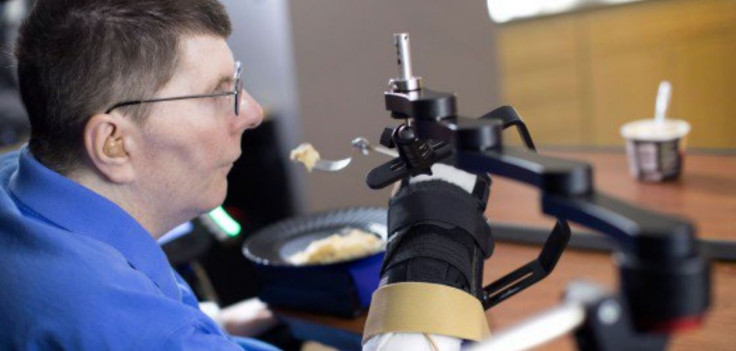Brain-controlled muscle stimuation makes paralysed man move limbs again

Social media is abuzz with talk on how William Kochevar, a 56-year-old paralysed man from Cleveland, has regained movement of his limbs through neuroprosthesis. He is a clear-cut illustration that a paralysed man’s reaching and grasping movements can now be restored through brain-controlled muscle stimulation.
A study on how a person who has been rendered paralysed due to high-cervical spinal cord injury can regain limb movements has been featured on the Lancet. “What we are doing is circumventing the spinal cord injury,” said Bolu Ajiboye, biomedical engineer at Case Western Reserve University, Cleveland, Ohio who led the experiment.
Among the documented reactions of Kochevar is that he had to think really hard to get his once immobile arm to do stuff. He has been paralysed from the shoulders down when he figured in an accident while riding a bicycle 10 years ago.
Kochevar’s arm movements remain very slow and limited. Scientists need to study further how to translate thoughts into the complex set of muscle activation needed to carry out more complicated yet smooth arm movements, said Andrew Schwartz, neurobiology professor at the University of Pittsburgh.
Cortically controlled neuroprosthesis has long been posited as the “holy grail” for intracortical brain-computer-interfaces (iBCIs). The efficacy of iBCIs has levelled up to the point where a handful but increasing number of laboratories around the US have become involved in trials concentrating on humans with chronic paralysis.
Dr Ajiboye tucked a dual degree in Biomedical and Electrical Engineering, plus a minor in Computer Science, from Duke University in Durham, North Carolina, USA. He then moved to obtain his masteral and doctoral degrees from Northwestern University.
Through neuroprosthesis, which reconnected his brain with his muscles, Bill Kochevar has been able to eat and drink again. Coordinated electrical stimulation of peripheral muscles and nerves, known as functional electrical stimulation (FES), has usually been utilised for volitional movements like twitching facial muscles, moving the head movements or shrugging the shoulder.
In the case of Kochevar, two small recording chips were implanted in his motor cortex and 36 electrodes were embedded in his right arm. He was able to coordinate reaching and grasping movements using his own paralysed arm and hand.
Dr Ajiboye used the two chips implanted in Kochevar’s brain to get a measurement of neurons firing when he thinks about moving. The signals are processed by a mathematical algorithm, which are then transmitted to the electrodes in Kochevar’s upper and lower arm.
The study was conducted by the lead experimentor with neuroscientists from Wyss Center for Bio and Neuroengineering, Geneva, Switzerland. Scientists from Case Western Reserve University and the Cleveland Functional Electrical Stimulation Center who conducted the pilot trial hope to gain heaway with further studies. The case of Kochevar is sterling example of how neuroprosthetics can restore function and sensation for people with high-cervical spinal cord injury.





















